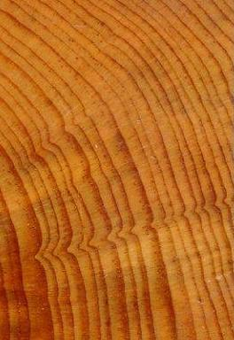NOAA/WDS Paleoclimatology - Voelker - Clam River - QUMA - ITRDB WI009
This archived Paleoclimatology Study is available from the NOAA National Centers for Environmental Information (NCEI), under the World Data Service (WDS) for Paleoclimatology. The associated NCEI study type is Tree Ring. The data include parameters of tree ring with a geographic location of Wisconsin, United States Of America. The time period coverage is from 92 to -58 in calendar years before present (BP). See metadata information for parameter and study location details. Please cite this study when using the data.
- Cite as: Voelker, S.L. (2013-05-16): NOAA/WDS Paleoclimatology - Voelker - Clam River - QUMA - ITRDB WI009. [indicate subset used]. NOAA National Centers for Environmental Information. https://doi.org/10.25921/aaad-pr11. Accessed [date].
- Please refer to Credit tab for full citation information.
- doi:10.25921/aaad-pr11
- noaa-tree-15364
- NCEI DSI 1200_02
- NCEI DSI 1200_01
noaa-tree-15364
| Search Data |
|
| Download Data |
|
| Distribution Formats |
|
| Ordering Instructions | Contact NCEI for other distribution options and instructions. |
| Distributor | NOAA National Centers for Environmental Information
ncei.info@noaa.gov |
| Dataset Point of Contact | NOAA National Centers for Environmental Information
ncei.info@noaa.gov |
| Dataset Point of Contact | Data Center Contact
NOAA World Data Service for Paleoclimatology 828-271-4800 paleo@noaa.gov |
| Coverage Description | Date Range: 1858 CE to 2008 CE; Date Range: 92 cal yr BP to -58 cal yr BP; |
| Time Period | 1858 to 2008 |
| Spatial Bounding Box Coordinates |
N: 45.85
S: 45.85
E: -92.36
W: -92.36
|
| Spatial Coverage Map | |
| General Documentation |
|
| Associated Resources |
|
| Publication Dates |
|
| Data Presentation Form | Digital table - digital representation of facts or figures systematically displayed, especially in columns
|
| Dataset Progress Status | Complete - production of the data has been completed |
| Data Update Frequency | Data update frequency not available |
| Supplemental Information |
STUDY NOTES: Cores Stored at: # Oregon State University # # These cores were taken to measure growth rates, wood anatomy and stable # isotope measurements from dominant and co-dominant trees across tree # ages. Two cores were taken for each tree but in most cases only one # was measured for ring-widths. The other was destructively sampled for # stable isotope measurements. NOAA Template Raw Measurements file added 2019-02-08.
ABSTRACT SUPPLIED BY ORIGINATOR: Paleoclimate proxies based on the measurement of xylem cell anatomy have rarely been developed across the temperature range of a species or applied to wood predating the most recent millennium. Here we describe wood anatomy-based proxies for spring temperatures in central North America from modern bur oaks (Quercus macrocarpa Michx.). The strong coherence of temperature signals across the species range supports the use of these proxies across thousands of years of climatic change. We also used 79 subfossil oak log cross sections from northern Missouri, 14C-dated to 9.9 - 3.63 ka (ka is 1000 cal yr BP), to assess the frequency of oak deposition into alluvial sediments and a subset of these oaks for a wood anatomy-based reconstruction of spring paleotemperatures. Temperatures during the Younger Dryas cold period (YD) were up to 3.5°C lower than modern temperatures for that region, equivalent to or lower than those experienced at the northern edge of the modern species range. Compared to extant oaks growing at much higher [CO2], subfossil oaks had greater vessel frequencies. Besides very low theoretical (or estimated) xylem conductivity near the beginning of the oak record near 13.6 ka, vessel frequencies greater than modern trees compensated for reduced vessel dimensions so that theoretical xylem conductivity was consistently above that of modern trees at the cold northern sites. Significant correlations were found between the frequency of 14C-dated oaks and either d18O from the NGRIP (North Greenland Ice Core Project) ice core or from the Cariaco grayscale marine-sediment record from the southern Caribbean sea. Oak deposition into alluvial sediments during the YD was significantly lower than expected given the average sample depth of oaks from 9.9 to 13.6 ka. Reduced oak deposition during the YD suggests that an abrupt shift in climate reduced oak populations across the region and/or changed the rates of channel movement across drainages. |
| Purpose | Tree ring data from the International Tree Ring Data Bank and World Data Center for Paleoclimatology archives. Most data sets include raw treering measurements (most are annual ring width, with some collections of earlywood or latewood width or wood density), plus chronologies (standardized growth indices for a site compiled from multiple treering samples). Reconstructions of climate variables are included with some of these data sets. Each data type is stored in a separate data file; the data type is coded into the file name. For details please see: http://www.ncei.noaa.gov/products/paleoclimatology/tree-ring |
| Dataset Citation |
|
| Cited Authors |
|
| Originators |
|
| Publishers |
|
| Theme keywords | Global Change Master Directory (GCMD) Science Keywords
|
| Data Center keywords | Global Change Master Directory (GCMD) Data Center Keywords
|
| Place keywords |
|
| Use Constraints |
|
| Access Constraints |
|
| Fees |
|
Last Modified: 2024-04-03
For questions about the information on this page, please email: ncei.info@noaa.gov
